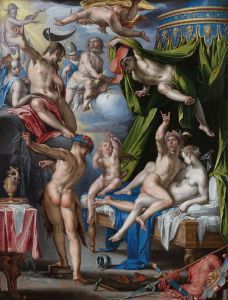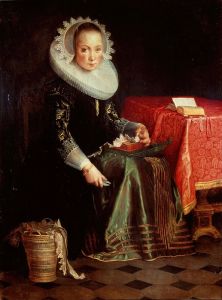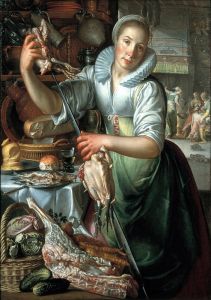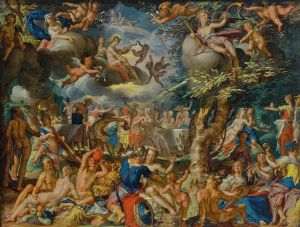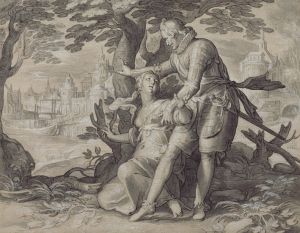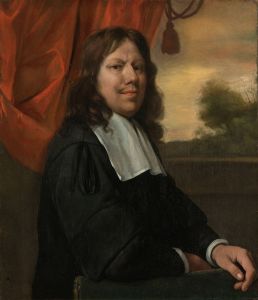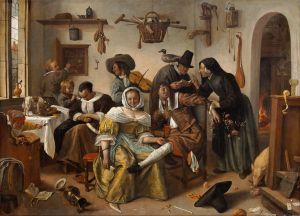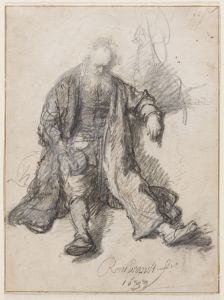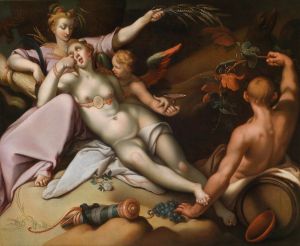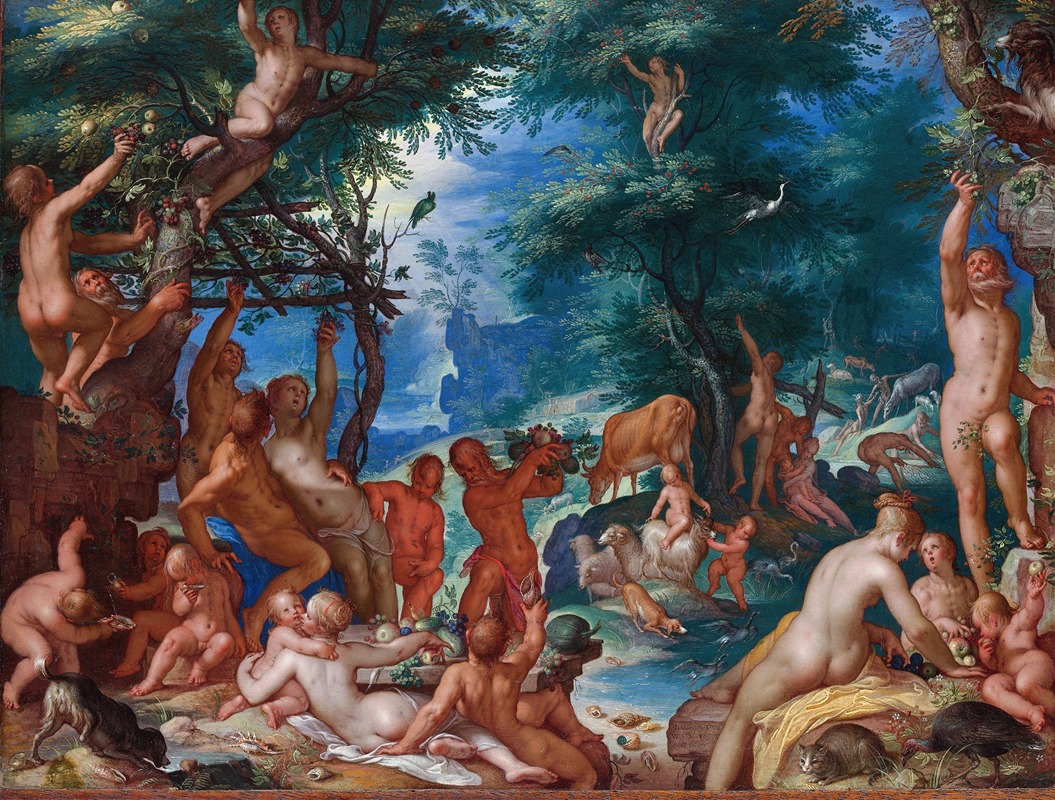
The Golden Age
A hand-painted replica of Joachim Wtewael’s masterpiece The Golden Age, meticulously crafted by professional artists to capture the true essence of the original. Each piece is created with museum-quality canvas and rare mineral pigments, carefully painted by experienced artists with delicate brushstrokes and rich, layered colors to perfectly recreate the texture of the original artwork. Unlike machine-printed reproductions, this hand-painted version brings the painting to life, infused with the artist’s emotions and skill in every stroke. Whether for personal collection or home decoration, it instantly elevates the artistic atmosphere of any space.
Joachim Wtewael's The Golden Age is a notable painting created by the Dutch Mannerist artist in 1605. Wtewael, known for his intricate compositions and vibrant use of color, was a prominent figure in the late Mannerist movement in the Netherlands. This painting exemplifies his skill in combining mythological themes with a highly detailed and imaginative style.
The subject of The Golden Age is derived from classical mythology, specifically the concept of a utopian era described in ancient Greek and Roman literature. The Golden Age, as recounted by poets such as Hesiod and Ovid, was a time of peace, abundance, and harmony, where humanity lived in a state of innocence and prosperity, free from toil and suffering. Wtewael's depiction of this idyllic period reflects the artist's fascination with mythological narratives and his ability to translate them into visually compelling works.
The painting portrays a group of nude figures reclining and interacting in a lush, pastoral landscape. The figures are rendered with meticulous attention to detail, showcasing Wtewael's technical prowess and his interest in the human form. The composition is characterized by its dynamic arrangement of figures, intricate poses, and a sense of movement that animates the scene. The landscape is richly detailed, with verdant foliage, flowing water, and a serene sky, contributing to the idyllic atmosphere of the work.
Wtewael's use of color is particularly striking in The Golden Age. The palette is vibrant and saturated, with warm tones dominating the figures and cooler hues in the background. This contrast enhances the sense of depth and creates a harmonious balance between the figures and their surroundings. The artist's skillful use of light and shadow further adds to the three-dimensional quality of the painting.
The Golden Age is an excellent example of Wtewael's ability to blend classical themes with the stylistic elements of Mannerism. The elongated proportions, complex poses, and theatrical composition are hallmarks of the Mannerist style, which sought to push the boundaries of naturalism and explore the expressive potential of art.
Today, The Golden Age is housed in the Louvre Museum in Paris, where it is part of the museum's extensive collection of European paintings. The work is celebrated for its technical brilliance, imaginative composition, and its ability to convey the timeless allure of mythological themes. It remains a testament to Wtewael's artistic legacy and his contribution to the rich tradition of Dutch painting.







